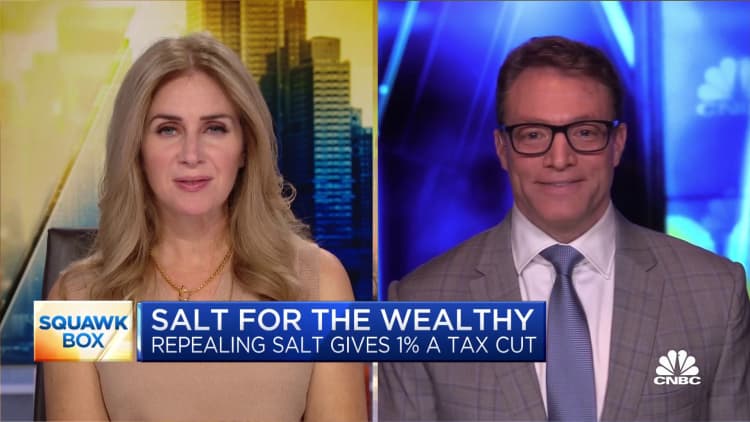House Democrats' $1.75 trillion spending package boosts the limit on the federal deduction for state and local taxes, known as SALT, to $80,000 through 2030.
However, many filers don't know how the change to SALT may affect their bottom line, experts say.
"The SALT cap increase will have the biggest effect on high-income-tax states like New York, California and New Jersey," said certified financial planner Matthew Benson, owner at Sonmore Financial in Chandler, Arizona.
Filers subtract the greater of the standard or itemized deductions from adjusted gross income to reach taxable income, the number used to calculate their bill.
More from Personal Finance:
House Democrats pass spending package with $80,000 SALT cap through 2030
Big takeaway for Build Back Better: 'lack of change' for wealthy Americans' taxes
These states offer a workaround for the SALT deduction limit
For 2021, the standard deductions are $12,550 for single filers or $25,100 for married couples filing together, meaning they won't itemize if write-offs — including SALT, medical expenses, charitable gifts, mortgage interest and more — fall below those thresholds.
And since the Tax Cuts and Jobs Act of 2017, filers who itemize deductions can't claim more than $10,000 for SALT, increasing levies for filers with high state income and property taxes.
However, the House Democrats' plan temporarily increases the limit to $80,000, allowing eligible filers to further reduce taxable income.
"This would certainly cause more people to itemize again in high-income-tax states," said Benson, explaining how most filers don't currently exceed the standard deduction.

But the savings from the increased limit depends on how much it reduces someone's taxable income.
"I think the simplest way to explain [the savings] is roughly your marginal rate times the difference in taxable income," said Evan Beach, a CFP and director of wealth advisory at Campbell Wealth Management in Alexandria, Virginia.
For example, if the higher SALT deduction reduces taxable income by $10,000 and the marginal tax rate is 22%, there will be $2,200 in savings, he said.
Tax-planning opportunity
If enacted, the increased SALT deduction cap may also create planning opportunities for those who fall into a "tax valley" with lower taxable income through 2030, Beach said.
For example, someone with less income may prefer to sell appreciated assets in taxable accounts sooner to reduce their capital gains bill, he said.
They may also complete so-called Roth conversions, shifting pre-tax money to after-tax Roth individual retirement accounts, paying levies now for future savings.
It's like walking into the store and seeing coffee on sale for the next week, Beach explained. Someone may buy more knowing there's a 20% discount.
"We want to pay our taxes now at this lower rate before they pop back up," he said.
However, the future of Build Back Better is still unclear. To pass, lawmakers need votes from all 50 Democratic Senators to sidestep Republican pushback during the reconciliation process.


